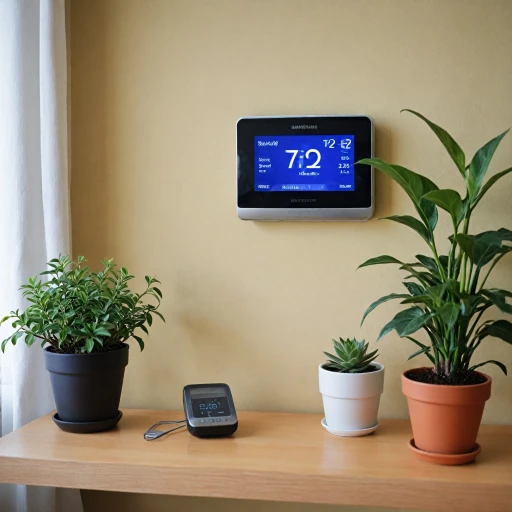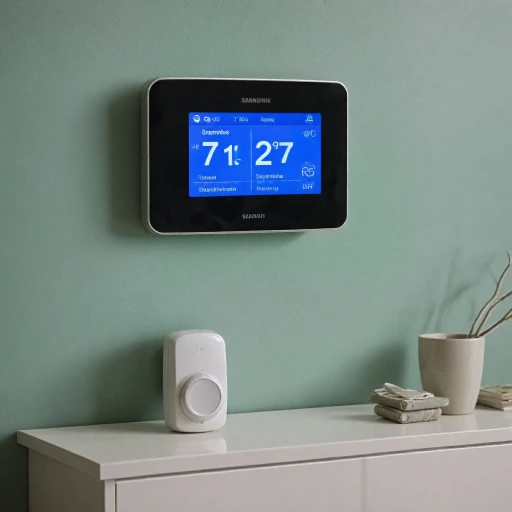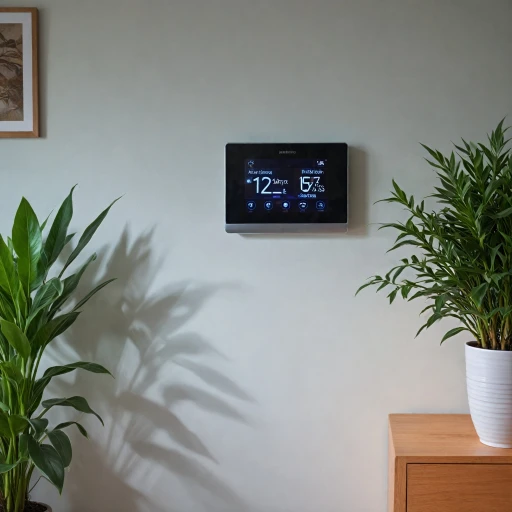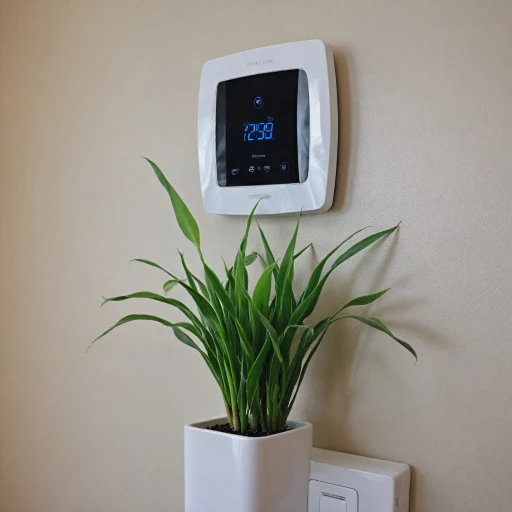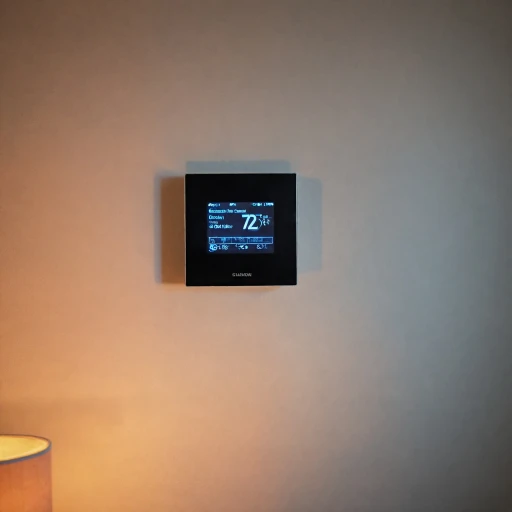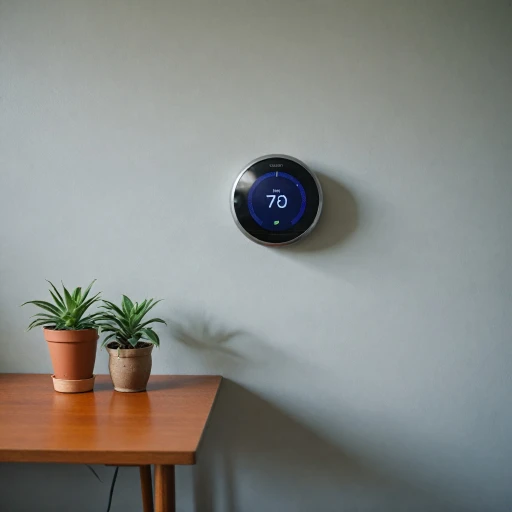
Understanding the Nest Thermostat Second Generation
Decoding the Features and Design
Nest Thermostat's Second Generation, often referred to as a smart thermostat marvel, combines functionality with design to bring a modern edge to home climate control. Manufactured by Google Nest, this learning thermostat transforms your daily temperature adjustments into a learning experience over time. The unit is primarily designed to learn your habits and help regulate energy consumption efficiently. Incorporating features from its predecessor while adding new capabilities, this model is a step forward in smart thermostats. The Nest Learning Thermostat’s stainless steel finish offers an aesthetically pleasing addition, blending seamlessly into most homes. This smart device tells you more than just your home's temperature. With a temperature sensor that responds intelligently, users can experience a tailored temperature experience. Nest Industry experts have praised this generation for its easy integration with the Google app. This offers a variety of exciting features for smart home enthusiasts. Users can effortlessly adjust settings, view energy history, or even receive support if issues arise. With a continual development of new generations, Google's commitment to improving their models ensures that the Nest Thermostat remains among the top choices for energy-efficient and technology-forward solutions. For an overview of the advancements and offerings in the latest Nest model, you can explore a detailed examination in this look at the latest 4th generation model.Energy Efficiency and Cost Savings
Energizing Savings with Advanced Learning
The Nest Thermostat Second Generation is not just about modern aesthetics with its stainless steel finish, but it's truly an energy-saving powerhouse. Backed by Google's cutting-edge technology, this smart thermostat has piqued interest within the world of programmable thermostats.
This learning thermostat adapts to your lifestyle, adjusting temperatures optimally based on your daily habits. Over a few days, it will learn and predict when you need heating or cooling, offering a personalized climate control that can significantly reduce energy wastage.
- Energy Efficiency: The thermostat's intelligence emerges from its ability to understand patterns, ensuring it uses just the right amount of energy at the right times. This efficient use of energy not only minimizes your carbon footprint but also leads to noticeable cost savings.
- Adaptable Learning: By tracking patterns through the Google app, it seamlessly integrates changes in your routine, providing a worry-free experience by auto-adjusting to changes without manual intervention.
- Temperature Insights: With its built-in temperature sensor, the gen nest technology assesses room conditions and tailors temperatures accordingly, without excessive energy consumption.
- Free Energy Reports: The thermostat generation from Nest offers monthly energy reports, allowing users to monitor their usage and optimize further for greater savings.
Moreover, installing the Nest thermostat comes with the added benefit of creating a smarter home environment. While installation and setup are straightforward, maximizing your thermostat's potential involves leveraging these energy-saving features to their fullest.
User-Friendly Features
Intuitive Interface and Convenient Access
The Nest Thermostat Second Generation shines in its user-friendly features, making it a standout product in the realm of smart thermostats. At the heart of this device's appeal is its intuitive interface, designed to provide users with effortless control over their home's temperature. The sleek, stainless steel dial offers a contemporary look, while allowing for simple manual adjustments without any hassle.
Complimenting the physical interface, the Nest App offers a robust support system for managing your thermostat remotely. This Google app is compatible across various devices, ensuring that adjustments can be made whether you're at home or on the go. The app offers insights into your energy use and provides helpful suggestions to further enhance home comfort.
Learning Capabilities and Adaptability
One of the standout features of this Nest generation is its self-learning capability. Within days of installation, the Nest Learning Thermostat begins to adapt to your schedule, setting itself up as a truly programmable thermostat. It learns your preferred temperature settings throughout the day and automatically makes adjustments accordingly, optimizing energy efficiency.
The learning thermostat also makes use of a Nest temperature sensor to maintain consistent comfort in rooms of your choosing. This feature ensures that even the farthest reaches of your living space are adequately heated or cooled to your liking.
Seamless Integration with Smart Home Ecosystems
Seamless integration with other smart home devices is another feature that enhances the Nest's offerings. Google Nest thermostats are built to connect effortlessly with a variety of smart home systems, including voice-controlled assistants. This integration enables homeowners to issue voice commands for temperature adjustments, transforming simplicity into an everyday luxury.
Installation and Setup
Simple Steps to Get Started with Your Nest Learning Thermostat
Setting up your Nest Learning Thermostat is designed to be straightforward, ensuring you can quickly start benefiting from its smart capabilities. Here's a quick guide to getting your Nest thermostat up and running:1. Unbox and Prepare Your Nest Thermostat
Once you receive your Nest thermostat, you'll notice its sleek, stainless steel design. Before installation, ensure you have the necessary tools such as a screwdriver, and check that your Wi-Fi is compatible with the Nest learning system. Additionally, it would be helpful to familiarize yourself with the thermostat's user manual provided in the box nest.
2. Remove Your Old Thermostat
With your Nest thermostat ready, the next step is to detach your existing thermostat. Begin by turning off the power to your HVAC system to avoid any electrical hazards. Carefully remove the old thermostat and make note of the wiring, which will guide you when connecting your new Nest device.
3. Install the Nest Thermostat Base
The Nest thermostat's base should align with your previously marked wire connections. Secure it firmly to the wall before connecting wires. The device offers a straightforward wiring setup, thanks to its color-coded system. This ensures that connecting each wire is intuitive and reduces the potential for errors.
4. Attach the Display and Power Up
With the base secure, snap on the Nest thermostat display. Once attached, restore power to your HVAC system. The device will gradually power up, taking you through an easy setup process. This includes setting preferences for temperature, energy efficiency, and Wi-Fi connection, which integrates with the Google app for remote control capabilities.
5. Use the Nest App for Final Setup
To maximize the benefits of your Nest thermostat, download the Google Nest app. This will provide detailed guidance on completing the setup, customizing schedules, and understanding the thermostat intricacies. The app also allows for remote temperature adjustments, truly transforming your thermostat nest into an intuitive smart home hub.
Following these installation steps will enable your Nest Learning Thermostat to start gathering data on your temperature preferences. Over time, it will offer insights into energy usage, helping you save on bills and reduce your carbon footprint, which links to earlier discussions regarding energy efficiency and cost savings.
Troubleshooting Common Issues
Tackling Frequent Miscommunications with Ease
Even the nest learning thermostat, a marvel of technology, isn't immune to its occasional hiccups. As owners navigate through the intricacies of their thermostat gen, common issues can arise, potentially causing frustration. Yet, troubleshooting can often be straightforward, thanks to Google Nest's robust support.
One common problem users encounter is the thermostat not holding the desired temperature. Double-check your temperature sensor settings; misaligned settings can cause discrepancies. If issues persist, a manual reset may be necessary. Simply remove the Google app from your device, then reinstall and reconnect your smart thermostat to restore optimal function.
Connection Challenges
Connectivity is another area where users sometimes hit a snag. Ensure that Wi-Fi connectivity is strong and free of interferences. Obstructions or network instability can lead to a Nest thermostat generation dropping offline. Users should also check for any app updates released since their last installation, as product updates from Google improve connectivity and enhance the learning capabilities of the thermostat gen.
Power and Charging Concerns
Another issue Nest generation users may face is related to the power supply. The stainless steel exterior is durable, but internal components might need a little more care. Ensure that your programmable thermostat is properly connected to the power source. If your model requires a C-wire and you're unsure about compatibility, refer to resources to comprehend the particularities of which Nest thermostat operates without a C wire.
Taking a proactive approach by familiarizing yourself with troubleshooting techniques ensures that your generation learning Nest thermostat continues to operate efficiently, maintaining comfort with minimal interruption. Remember, minor inconveniences are a small price to pay for the significant energy savings and convenience offered by the thermostat generation from Google.
Maximizing the Potential of Your Smart Thermostat
Unlocking the Full Potential of Your Google Nest Thermostat
Once you have successfully installed your Nest thermostat, you may wonder how you can make the most out of this smart device. With its ability to learn and adapt, your Nest thermostat offers a range of benefits that go beyond simple temperature control. Here's how to maximize its potential:
- Engage with the Learning Feature: The Nest Learning Thermostat is designed to understand your preferences. By recognizing your routines and adjusting settings accordingly, it optimizes energy use without you having to think twice. Over a few days, it analyzes data to set temperatures that are just right. By actively engaging with the device during the initial setup weeks, you're helping it to "learn" your comfort preferences effectively.
- Utilize the App: The Google Nest app offers more than just remote temperature control. With its user-friendly interface, you can schedule settings, set away modes, and monitor energy usage all through your smartphone. This flexibility will help you adjust settings from anywhere, ensuring both comfort and energy savings.
- Take Advantage of Energy Reports: Nest thermostats provide energy reports detailing your usage patterns. By understanding these reports, you can identify opportunities to save more energy and reduce costs. The insights offered are invaluable for making informed decisions about your heating and cooling behaviors.
- Set Up Temperature Alerts: With Nest’s temperature sensor feature, you can receive alerts if the home's environment changes unexpectedly, allowing you to make quick adjustments even if you're not home. This function can be particularly useful during seasonal changes or unexpected weather variations.
- Explore Additional Features: If you’re using the second generation model, consider exploring newer generations for advanced features like voice control and additional temperature sensors. The latest versions offer enhanced capabilities that may align better with your current needs.
Embracing these features not only increases your comfort but also takes advantage of the energy-efficient design of the Nest thermostat generation. With the right utilization, a smart thermostat becomes more than a tool—it becomes an integral part of your energy-saving strategy.


